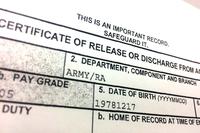WASHINGTON -- The Army Reserve is short on trainers, including drill sergeants. "We're trying to grow them every day, especially female drill sergeants," said Maj. Gen. Leslie A. Purser.
"My goal is to take advantage of the downsizing of the active-duty Army and bring some of those combat-arms Soldiers or even former drill sergeants trained on the active duty who are leaving the Army," said Purser, calling from her command, the 108th Training Command (Initial Entry Training) in Charlotte, North Carolina.
Although the 108th Training Command is headquartered in North Carolina, its commands reach to 44 states and Puerto Rico, so Soldiers aspiring to join them have a range of locations where they could drill as trainers.
Two of the command's three divisions support the four Army training centers at Forts Sill, Benning, Jackson and Leonard Wood. The other division primarily supports Reserve Officers' Training Corps, or ROTC units, adjunct faculty at universities, cadet summer training and military academy training.
Since the command has so many units, Purser said it's also experiencing a shortage of officers to lead them.
A lot of officers leaving active duty voluntarily or involuntarily are not even aware of these opportunities, she said. Leadership vacancies exist from company level up to brigade.
"Absolutely we're hiring. I've got companies without commanders," she said. "I would love to bring some of those guys in and give them a command or staff position that would lead to a command position."
Whether officer or enlisted, the benefits of joining the Reserve are enormous, Purser said.
Surprisingly, a lot of Soldiers being separated, including officers, are not even aware of the benefits. Take the point system, she said. When Reservist Soldiers reach age 60, they get paid based on the total number of points they have accumulated, one point for each day of service.
So drill weekends, plus the 15-day block of training per year, means most Reservists accumulate 50 to 100 points annually, she said.
Those with active service coming into the Reserves have an enormous advantage, she said. For a Soldier with 10 years of active duty, that's 10 times 365 days for a total of 3,650 points. "That's huge," Purser said. It means more money when they start drawing retirement at age 60 and they get the opportunity to continue to serve.
And, she said, if in the course of their Reserve service they have deployed or mobilized after 2008, they can count 90 days of that tour toward 90 days for retiring early - the only stipulation being that a Soldier can't retire before they're 50.
Some Soldiers who go Reserve may even end up getting a full-time Reserve instructor position at one of the training centers, or elsewhere, she said.
Also, TRICARE Reserve Select is the Reserve's medical insurance plan "and it's much cheaper than getting insurance on outside," Purser said.
Soldiers should look into these opportunities early, Purser said. They should visit their career counselors. Also Reserve Component Career Counselors, or RCCC, are located at every post and are there to explain Reserve benefits during out processing.
Tough as Nails
Soldiers who want to try for drill sergeant positions should be prepared for a challenging but rewarding experience, Purser said.
"It's a little more difficult to be a drill sergeant than it is for most other duties because our drill sergeants are truly at the front door of the Army," she said. For example, the Army Physical Fitness Test requires 60 points in each event -- running, sit-ups, push-ups. A drill sergeant must score 70 points in each event.
Only 19 percent of Soldiers are even eligible to be drill sergeants because in addition to the tougher standards, they have to go through a screening process to check for "past violations," she said. Because drill sergeants, like recruiters, are very influential, the screening process is intense. "We end up with the best of the best."
Expecting a nine to five job? Don't apply, she said. Drill sergeants are sometimes with their platoons 24 hours a day.
The U.S. Army Drill Sgt. Academy at Fort Jackson, South Carolina, is also rigorous, physically, academically and mentally, she said.
Sgt. Maj. Ed Roderiques, deputy commandant at the U.S. Army Drill Sergeant Academy, said that at the academy, there's a One Army School System. So Reserve and active drill sergeant leaders train both Reserve and active Soldiers on how to become drill sergeants.
"That ensures they're all getting the same training," he said, adding that Reserve and active used to have separate training.
Besides the Drill Sergeant Course at the academy, both active and Reserve Soldiers can also train at the Platoon Sergeant Course which is also at the academy, he added. The two courses are separate, with the Platoon Sergeant Course involving the advanced individual training follow-on to basic training.
Not all jobs, though, require graduating from the academy. The 108th Training Command also has position openings at various commands: logistics, administrative, trainers, operations, budget, and so forth, Purser said.
Also, not all drill sergeant-type jobs are at the four training centers. There are also T3 or train-the-trainer jobs, used to improve combat skills of Soldiers Reserve-wide.
For instance, the 377th Theater Sustainment Command has 30,000 Soldiers. During a recent exercise, Operation Sustainment Warrior, the 377th brought in drill sergeants to help other Soldiers brush up on skills like physical training, land navigation, marksmanship and so on, she said.
When Soldiers first came to receive help from the 377th, their marksmanship qualification rate was about 55 percent, she said. "We loaded them up with a bunch of drill sergeants and when they left they were at 100 percent qualification."
Storied Legacy
During the war years, 2001 to 2011, the 108th Training Command allocated 13 drill sergeant battalions to active duty to help U.S. Army Training and Doctrine Command, or TRADOC, with the increased initial entry training requirements as missions expanded in Iraq and Afghanistan, she said, pointing out that the 108th is operationally controlled by TRADOC, but reports to the Army Reserve Command administratively.
The command also provided drill sergeant units to U.S. Army Central Command to assist training Soldiers for the Iraq and Afghanistan armies. "Their military and civilian police training was critical in helping those countries develop their internal security and infrastructure protection program," she said.
Part of that effort was a female drill sergeant company, a first of its kind, which in 2012 developed the first female officer candidate school in Afghanistan, she added.
Reserve Soldiers currently comprise Task Force Beast, providing training, advice and assistance support to the Afghan security forces. In all, 471 Soldiers have supported that mission from the beginning, Purser said.
"We have great Soldiers here" at the 108th, she concluded. "They're so motivated and inspirational."












